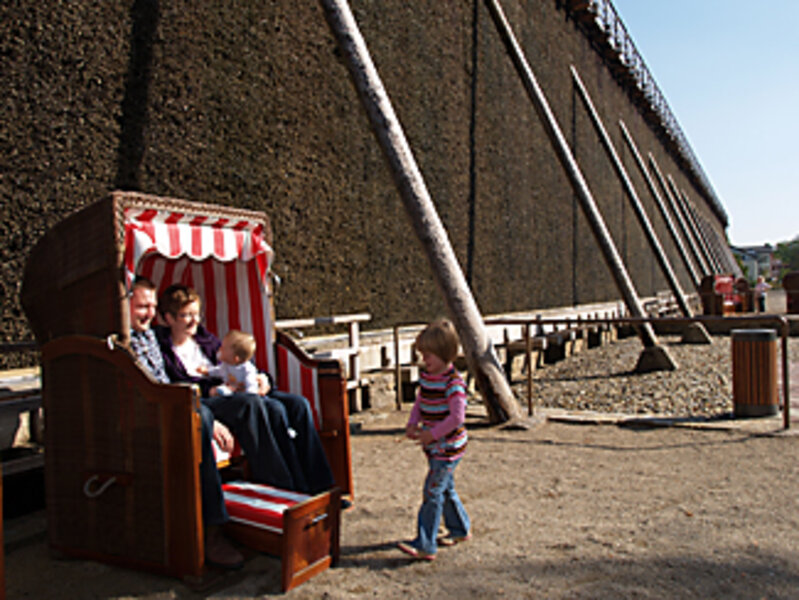In Germany, mineral baths and Bismarck
Loading...
| Frankfurt
Not long ago, Hannelore Elsner's life looked bleak. She was burdened with back pains, a shaky marriage, and unruly preadolescent children. Then her doctor prescribed a stay at a "Kurort," or "wellness clinic."
The three weeks of exercise, relaxation, and counseling – all custom-fitted by a medical staff in an oasis of green – did more than rejuvenate her physically, she says. It transformed her existence.
"I could stand back and think, 'What are my goals in life?' " she says back home in Frankfurt, preparing lunch for her two children. "I can see the horizon again."
Health clinics, including ones with supposedly curative mineral waters, are as much a part of German culture as bratwurst. They are also an integral part of the country's healthcare system, intended to help heal or prevent the further development of an illness.
Health insurance covers stays at "Kurs" for all Germans who need it, regardless of age, sex, income, or medical preconditions. And now, according to a recent law, health plans must also specifically cover visits for mothers.
German health insurance paid out €335 million ($492 million) last year to roughly 47,000 mothers and children who attended one of 84 certified "mother-children cure clinics." That represents only a fraction of the nation's €160 billion healthcare budget. "But," says Anne Schilling of the Berlin-based German Mother Recovery Foundation, a lobbying group, "each stay had a huge impact on the lives of those individual women."
Such an approach epitomizes several principles that experts say undergird the German healthcare system: universal coverage; comprehensive benefits; the healthy paying for the sick, the younger for the older. "There was a consensus after the war [World War II] in German society that health is a precious good," says Klaus Stegmueller, a health policy expert at the University of Fulda.
The nation's system usually ranks high in the world in terms of access, cost, and equity. German health expenditures total about 10.4 percent of GDP versus 15.3 percent in the US. This is true even though Germany is graying faster: 1 in 5 Germans is 65 or older compared with 1 in 8 in America.
The system that took care of Ms. Elsner isn't paid for through national taxes. By law, all working Germans pay roughly 8 percent of their gross incomes to one of 187 competing nonprofit insurers, or sickness funds. Employers pay the same.
"It's not a government-run program," says Uwe E. Reinhardt, professor of healthcare economics at Princeton University in New Jersey, who says that, of all the world's healthcare models, the German system could best fit US mind-sets. "The government directs it through laws, but it doesn't run the system."
In other European countries – Britain and France, for instance – people may buy a private insurance plan to supplement their national coverage. Although Germany has two separate systems, more than 90 percent of the population contribute to the public healthcare funds. Germany's unemployed, the old, and the seriously ill are covered by government plans. A small number of people, roughly 200,000, have no insurance.
"Everybody chips in to an insurance fund according to ability to pay," says Dr. Reinhardt. "Rich and poor have a stake in healthcare because they all have to make a contribution."
The German model dates back to medieval days. Groups of artisans – from blacksmiths to bakers – set the rules of their craft and had guild members contribute to a fund to care for people in difficult times. In 1883, Otto von Bismarck extended the guild system into national healthcare. The Bismarck model later found resonance worldwide, from Canada to Japan to Switzerland.
Germany's system today is hardly problem-free. With unemployment rising, fewer people are paying into the overall system. Plus, some insurance funds try to encourage people to spend less by refunding money when they don't visit the doctor, adding to financial burdens.
"The system is under stress," says Dr. Stegmueller. "We don't have a cost explosion, but we do have an income implosion."





